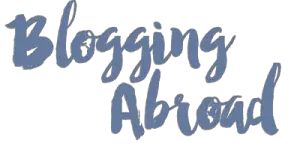
23 Oct 6 Ways to Break Through Writer’s Block
Writing a blog can be a bit of a rollercoaster ride. Sometimes the ideas are there and the words flow. At other times, your mind is blank, motivation waivers, and the words are—gone. Here are some exercises and ideas to help you get back on track and keep both you and your readers coming back for more:
1. The Cliff Hanger
One of the easiest ways to keep your readers (and yourself) interested is by enlisting in a method used by most prime time television shows worldwide: the cliff hanger.
You don’t have to match the drama in your life to that of a soap, but leaving a little mystery at the end of a post (even if you know the outcome) can draw readers back to your page. This doesn’t have to be a complex storyline, but simply a statement or two about future plans. If you know you’re going to a festival in a week’s time or that there is a special event at work, mention it in advance! Perhaps there is a local holiday or a wedding that you will attend in the near future… creating a little build-up for the event will not only bring your reader’s back but give you incentive to actually write about it!
2. Photos First
It has been said (just a handful of times) that a photograph is worth 1,000 words. If you enjoy photographing your journey use your pictures as inspiration.
When writer’s block gets to you, pick a photograph that is meaningful to you and write about it in detail! Explain the moment, your feelings at the time, how you got to that scenario… The next thing you know, a story unfolds itself. If you aren’t into photographing your blog, take a moment of meditation and reflect on the past week, try and pull an image or moment from memory that you can dissect in the same fashion.
3. Use Sense
In a writing course I took a couple of years ago, one of my first assignments was to go sit in a place of nature and write my way through 4 of the 5 senses: touch, smell, see, and hear. I sat down beside a creek in a Louisiana swamp and worked my way through them all… First by closing my eyes to listen and smell. With my eyes open, I really observed what was around me, touching the plants and grasses around me. I wrote down more detail than I’d ever imagine anyone wanting to read, but I still occasionally use the methods to bring more descriptive life to a scene.
4. A Simple Series
Find something that you enjoy writing about and look for it often. These may sound obvious, but the idea is to give your blog a reoccurring theme by discussing something that isn’t hard for you to experience regularly: different street foods, public transportation, food shopping, visiting a new hostel.
Set yourself an achievable goal given your subject choice, maybe bimonthly posts on trying a new recipe or a monthly post on discovering a new beautiful beach, and commit to that regular posting. You always have something to write about and your readers will enjoy following your discoveries and progress through the theme. (Note: this doesn’t have to be the main theme of your blog, just a component.)
5. Crowdsource
When you are really stumped for ideas, it doesn’t hurt to ask your friends, family and readers! They might not cure your writers’ block but they might provide enough ideas to send the creative sparks flying. Use this opportunity to write a post asking for feedback or ideas and give some appreciation to your readers and followers so far!
6. Duly Noted
My final and favorite piece of advice: carry a writing medium everywhere. It could be a small notebook and pen or the notepad application on your phone, but providing yourself with a quickly accessible way of recording ideas ensures that they are less likely to be lost and forgotten.

Learn more about creating and recording brilliant blog post ideas in Blogging Abroad’s Impact Academy course
Blog post ideas can be like buses, you wait forever for one and then they all come at once. Write down your ideas, no matter how small; write down something that inspires you or shocks you, makes you smile or frown. Create an idea bank for future posts and bear in mind the timelessness of each idea. A post about a current political situation or a seasonal festival should be posted in the moment. A post about the joys of children playing in a park is timeless and can be saved for a later date, if you hit a lull.
I hope some of these ideas will help you break through the block and get back to writing, or at least get some creative juices flowing again! One last thing to consider, from a personal perspective: sometimes it doesn’t hurt to take a break from blogging. I tried to start a blog 4 times in the last 3 years. Three of them lost momentum after just a few weeks (if that). I was in the midst of a university routine where the things I am most passionate about (the ocean, traveling, eating good food) were not really part of my life at the time. Trying to force myself to blog was doing more harm than good. After graduation, a few trips abroad and my acceptance into the Peace Corps, my inspiration and motivation found their way back to me. I have now been posting consistently, every 3-7 days, for over six months, and I have a dozen ideas in my ‘idea bank’!
As you are reading this, you are probably a part of the Blogging Abroad community and most likely abroad doing something you are passionate about. If you’re truly having writers’ block, allow yourself a blogging break, refocusing on your passions and the inspiration will come to you! In the meantime, these ideas are here to help, as are the other tools and resources on Blogging Abroad.
This is a guest post by Stav Friedman. Growing up, Stav lived across the globe with her family in exotic places such as Taiwan, Israel, England, and Guam. After high school, she went abroad on her own, adding Costa Rica and the US Virgin Islands to her ‘lived’ list. Once she obtained her Bachelor’s degree in Marine Biology, Stav joined the Peace Corps as a Coastal Resource Management Volunteer in the Philippines–where she is now! She loves to travel, eat great food, watch the sunrise, and spend as much time in the ocean as possible.





Sorry, the comment form is closed at this time.